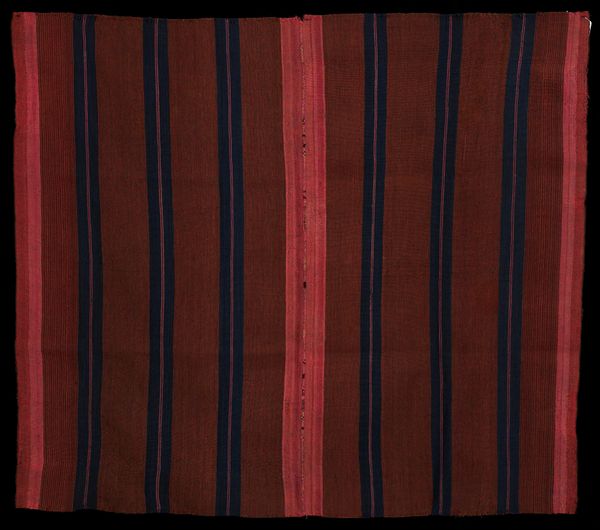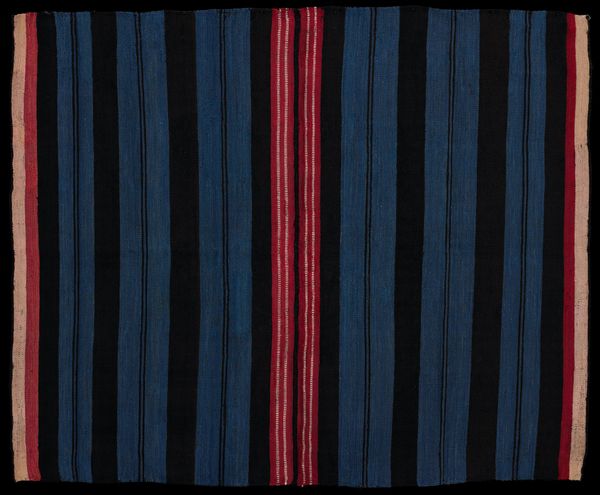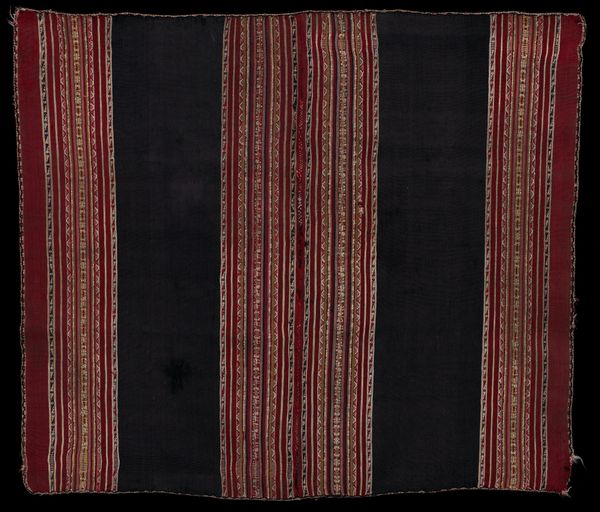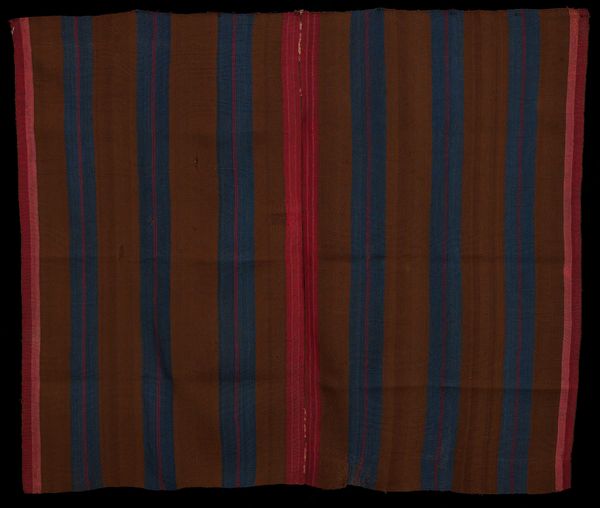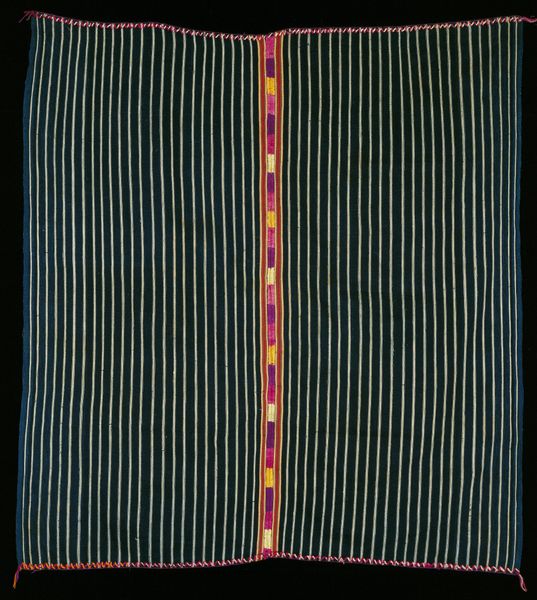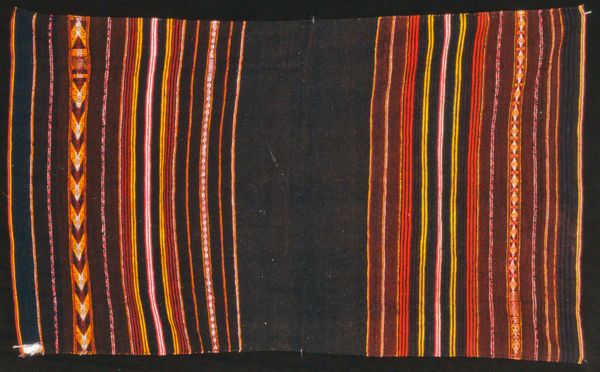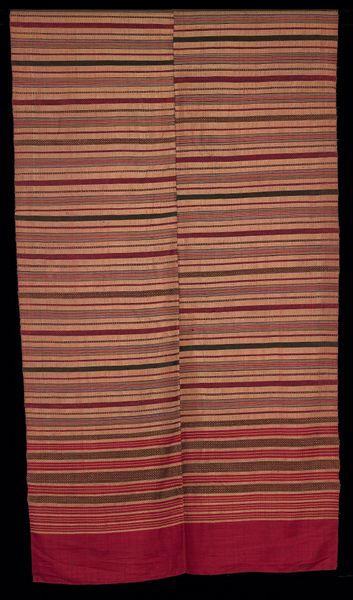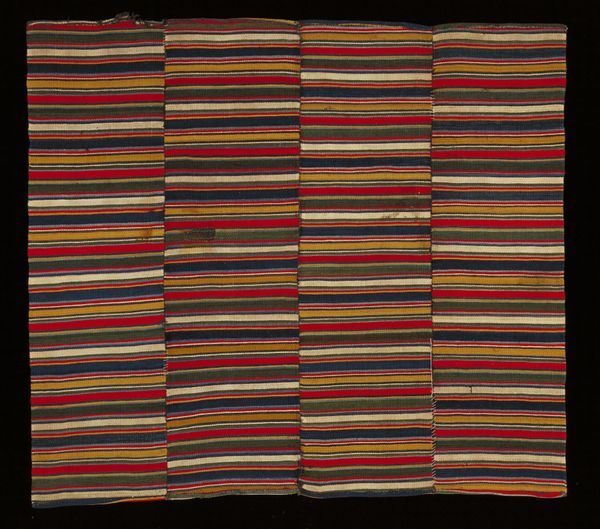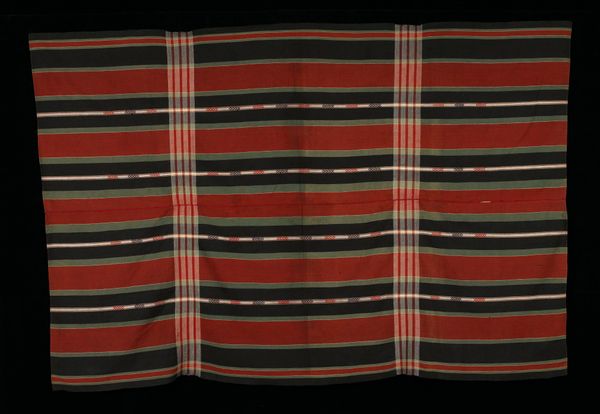
weaving, textile
#
weaving
#
textile
#
geometric pattern
#
geometric
#
indigenous-americas
Dimensions: 52 x 45 in. (132.08 x 114.3 cm)
Copyright: Public Domain
Editor: Let’s take a look at this Woman's mantle, or "iscayo", made by the Aymara people around the mid-19th century. It's a textile, and the vertical stripes immediately caught my eye. There's a powerful simplicity to the design. What historical factors shaped its creation and use within the Aymara community? Curator: The "iscayo," or woman's mantle, isn’t simply a textile; it's a profound statement about Aymara identity and social structures. The very act of weaving, traditionally a female domain, positions women at the center of cultural production. The stripes, rather than being mere decoration, reflect complex social dynamics. Were these made for personal use, or trade? Who was its original consumer and does that affect how we see this piece? Editor: I hadn't thought about trade! So, the colors or patterns might indicate something about the wearer's status, or even their origin? Curator: Exactly. The intensity of color, the complexity of the weave – all speak volumes about the woman wearing it. Moreover, consider how museums and collections influence how we now perceive these works, taking them out of their original social context and re-framing them as objects of art, what impact that has on what it communicates? Editor: That's a great point. We're viewing it in a museum setting, far removed from its everyday function and cultural significance. Do you think that by focusing on the visual aspects, we might overlook some important social messages? Curator: It’s a risk. It is in this decontextualization that we risk losing the political dimensions embedded in the work. Its very creation was tied to the assertion of cultural identity. So, even in a museum setting, we can aim to consider its history, and the hands and community that shaped it. Editor: So I guess my first read of simple stripes was quite a superficial impression of this beautiful textile, that truly represents centuries of tradition! I appreciate the perspective on how its current presentation alters the impact.
Comments
No comments
Be the first to comment and join the conversation on the ultimate creative platform.
